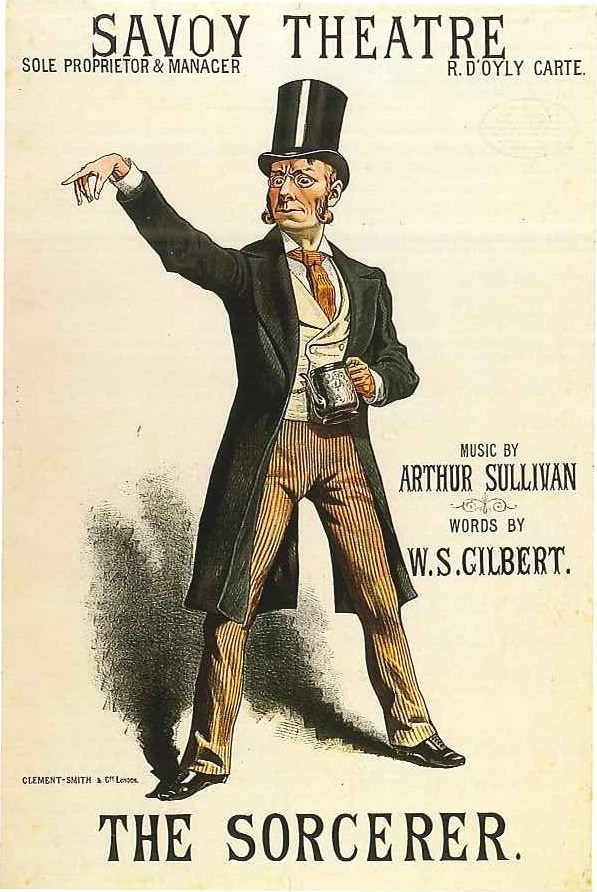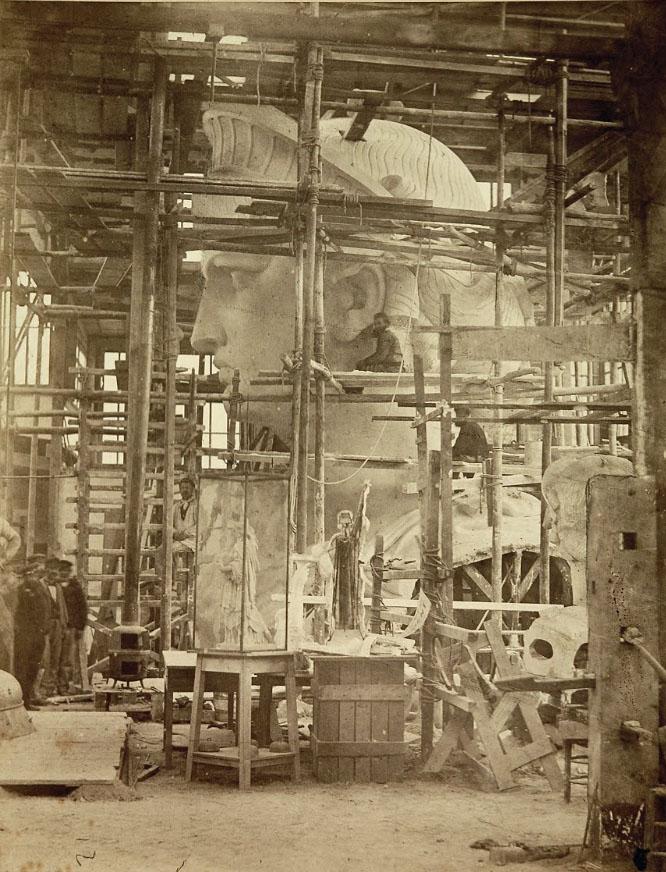1877

Illustrated
Popular Culture of 1877, the Year of the Phonograph
By
Doug Boilesen 2023
With the completion
of the Phonograph at Edison's Menlo Park Laboratory on December
6, 1877 sound was captured and the recorded human voice
was played back. It was an historic moment.
The first public demonstration
of the Phonograph at the office of Scientific American
in New York City on December 7, 1877 could be called popular culture's
official announcement of the Revolution of Recorded Sound.
This page provides
some illustrations and context for the year when the phonograph
was introduced to the public. Edison's
invention of the Phonograph is just one event in 1877 and its
completion was at the end of that year. Nevertheless, the Scientific
American writer's reaction in his December 22, 1877 article
"The
Talking Phonograph" reveals the significance of that
moment. The talking machine
would change the perception of ephemeral sound forever.
The Phonograph was
a wonder bordering on magic and the writer touched on this when
he wrote "It is impossible to listen to the mechanical
speech without his experiencing the idea that his senses are deceiving
him."
Events
and Popular Culture in 1877
Like recorded sound,
popular culture has objects and illustrations that
can resonate beyond their own time and place.

The design of this
1877 1-cent coin depicts Lady Liberty wearing a traditional Native
American headdress. The word “LIBERTY” is on the band of the bonnet.

THE NEW YEAR:
1877, Harper's Weekly, January 6, 1877
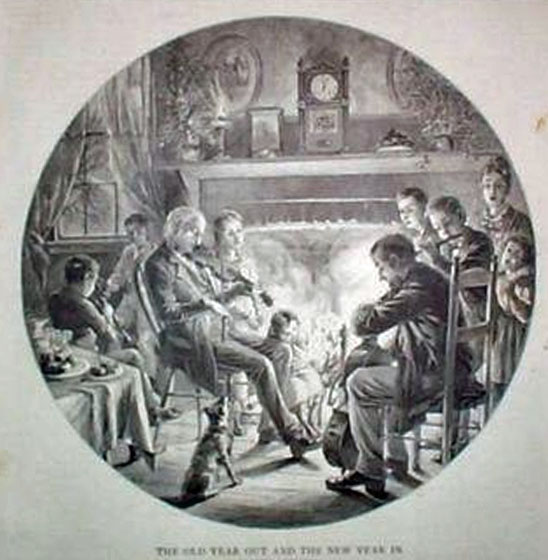
"The Old Year
Out and the New Year In." The Illustrated Christian
Weekly, New York, January 6, 1877.

A Day's "Still
Hunting" after Buffalo," , Harper's Weekly, March
1877.
January 8, 1877
– Battle of Wolf Mountain: Crazy Horse and his warriors fight
their last battle with the United States Cavalry in Montana. Wikipedia

Illustration of Battle
of Wolf Mountain, Frank
Leslie's Illustrated Newspaper, May 5, 1877
January 25, 1877:
Congress establishes the Electoral Commission to determine the
disputed 1876 presidential election between Rutherford B. Hayes
and Samuel J. Tilden. In the Compromise of 1877 Rutherford B.
Hayes is selected as President, even though Samuel J. Tilden had
won the popular vote. Hayes became the 19th President of the United
States and was the first President to listen to a phonograph which
he did at the White House on April 18, 1878.

President Hayes and
His Cabinet, published by Currier & Ives, c.1877 (Courtesy
Library of Congress)

Rutherford B. Hayes
United States 11-cent postage stamp issued October 4, 1922.
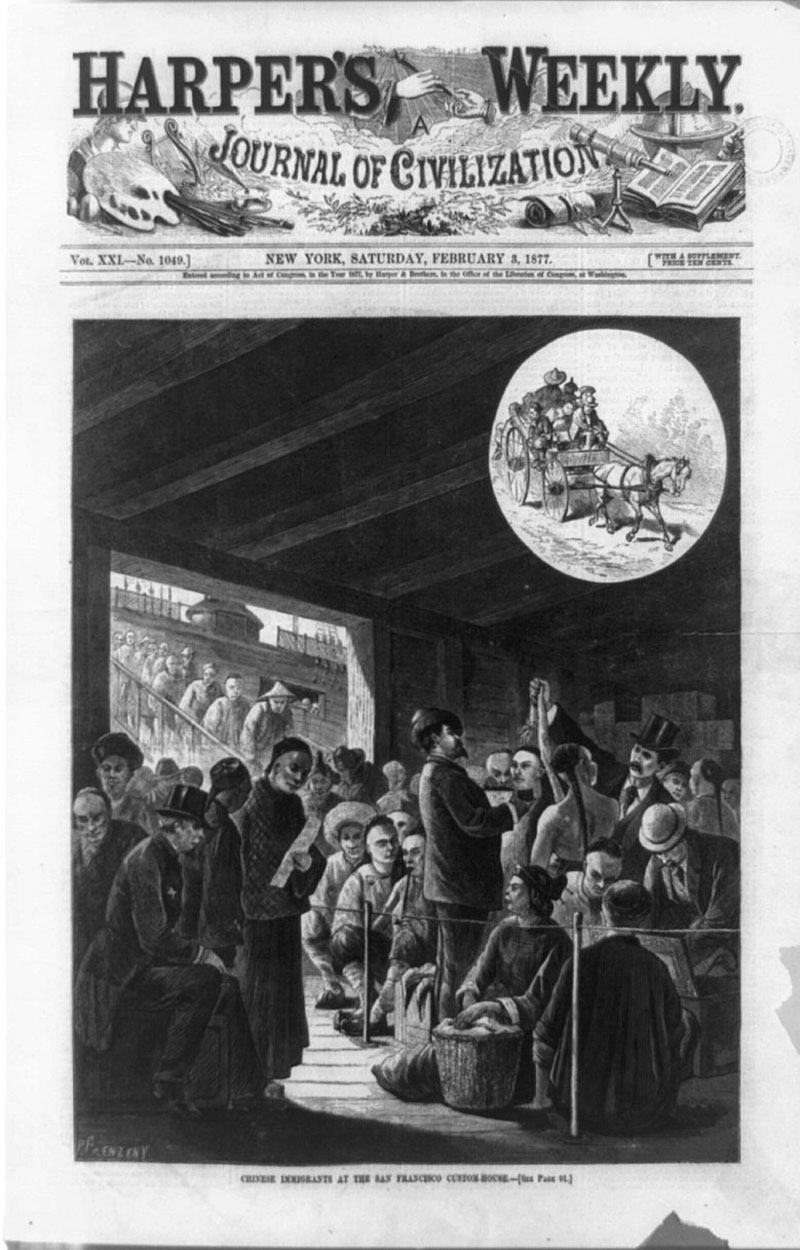
"Chinese Immigrants
at the San Francisco Custom-House," Harper's Weekly, February
8, 1877.
February 28 – Agreement
of 1877 (19 Stat. 254): Congress annexes Sioux Indian land,
including the Black Hills. Wikipedia.
The following is the
top portion of the treaty of 1868 which was broken by the Agreement
of 1877.

Treaty of 1868,
April 29, 1868 (Courtesy National
Archives and Records Administration)
"In the 1868 treaty, signed
at Fort Laramie and other military posts in Sioux country, the
United States recognized the Black Hills as part of the Great
Sioux Reservation, set aside for exclusive use by the Sioux
people. However, after the discovery of gold there in 1874,
the United States confiscated the land in 1877." (Ibid.)
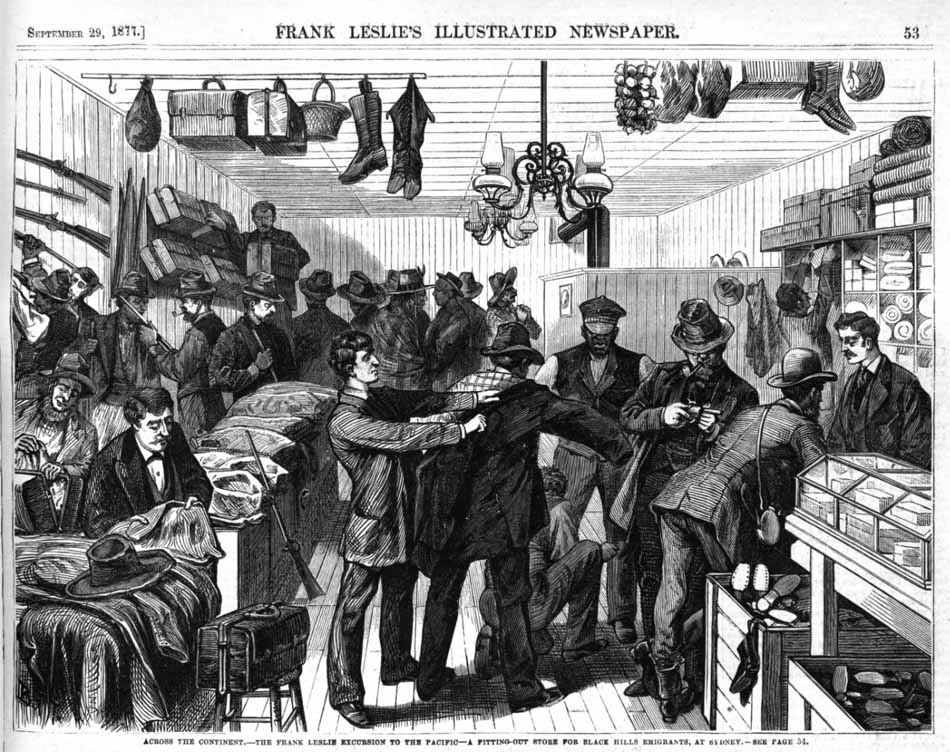
"A Fitting-out Store
for Black Hills Emigrants, at Sydney, Nebraska, Frank
Leslie's Illustrated Newspaper, September 29, 1877.
March 28, 1877: A Telephonic
Suggestion

Puck
magazine, March 28, 1877
In January of 1877, Alexander
Graham Bell received a patent for his electro-magnetic telephone.
On May 4 he gave a public demonstration at the Boston Music
Hall with voices transmitted from multiple locations. Signor
Brignoli sang his part from the Providence Music Hall. A three-part
song was transmitted from Somerville, MA." (Print and
text courtesy Greatcaricatures.com.)
"Reform is Necessary in the
Foreign Line," Harper's Weekly, April 4, 1877.

"Asbestos Materials" awarded
"The Centennial Prize Medal" for their Absestos Roofing,
Paints, Steam-Pipe and Boiler Coverings and Asbesto Steam Packing
materials, "Frank Leslie's Illustrated Newspaper"
April 1877.
May 5, 1877: Sitting Bull
leads his band of Lakota into Canada to avoid harassment by
the United States Army under Colonel Nelson Miles. Wikipedia
- Aftermath of the Battle of the Little Big Horn.
A United States 28-cent postage
stamp honoring Sitting Bull was issued on September 14, 1989.
"Sitting Bull and the United
States Commission," Harper's Weekly, December 8, 1877.
In 1877, the
federal government decided to remove the Poncas to Indian Territory.
Standing Bear, a tribal leader, protested his tribe's eviction.
Federal troops enforced the removal orders, with the result that
the Poncas arrived in Indian Territory in the summer of 1878.
(Chief
Standing Bear - National Park Service).
May 12, 1879: A landmark
decision by Judge Elmer S. Dundy determined that Ponca Chief
Standing Bear was entitled to the same constitutional rights
as all Americans. Previously, Standing Bear was not even recognized
as a person by the U.S. government. Dundy's ruling that "an
Indian is a person" would be honored 144 years later on a
United States usa forever postage stamp "with
the Ponca Chief honored as a civil rights icon by the same
government that once denied his humanity." (Lincoln
Journal Star, Justin Wan, May12, 2023).

THE ADVANCED AGE,
Harper's Weekly, May 19, 1877.
May 19, 1877: "THE
ADVANCED AGE"- Existential cartoon on cover of Harper's
Weekly - Will Humans destroy Earth?
Mercury. "What under the
Sun are you doing?"
Mars. "Mortals will make
such big guns, and this is the consequence."
June 1877 - NEZ PERCE WAR 1877
- "The Nez Perce War was an armed conflict in 1877 in
the Western United States that pitted several bands of the Nez
Perce tribe of Native Americans and their allies, a small band
of the Palouse tribe led by Red Echo (Hahtalekin) and Bald Head
(Husishusis Kute), against the United States Army. Fought between
June and October, the conflict stemmed from the refusal of several
bands of the Nez Perce, dubbed "non-treaty Indians," to give up
their ancestral lands in the Pacific Northwest and move to an
Indian reservation in Idaho Territory. This forced removal was
in violation of the 1855 Treaty of Walla Walla, which granted
the tribe 7.5 million acres of their ancestral lands and the right
to hunt and fish on lands ceded to the U.S. government."
"An 1877 New York Times
editorial discussing the conflict stated, "On our part, the war
was in its origin and motive nothing short of a gigantic blunder
and a crime." ( Wikipedia
and "A
LESSON FROM THE NEZ PERCES". The New York Times. 1877-10-15.
ISSN 0362-4331. Retrieved 2021-01-26).
The 6-cent stamp portraying Chief
Joseph, the great Nez Perce warrior, was first placed on sale
at Washington, DC, on November 4, 1968, as a tribute to Indian
heritage and to mark the opening of the National Portrait Gallery.
It is the first multicolor US stamp to feature a Native American.
(Courtesy Smithsonian
National Postal Museum).
June 9, 1877: Nebraska -- Crazy
Horse and his band of Indians on their way from Camp Sheridan
to General Cook at Red Cloud Agency, Sunday, May 6th. From a
sketch by Mr. Hottess.

Crazy Horse and his
Band of Indians travel to Red Cloud Agency, Frank Leslie's
Illustrated Newspaper, June 9, 1877.

Sheep-Shearing Festival
of the Southern Nebraska Wool-Growers' Association, Beatrice,
Nebraska, May 20, 1877, Frank Leslie's Illustrated Newspaper,
June 16, 1877.

End of the Nez Perce War - Surrender
of Chief Joseph, Harper's Weekly, November 1877.
July 14, 1877 - GREAT RAILWAY
STRIKE OF 1877. "The Great Railroad Strike of
1877, sometimes referred to as the Great Upheaval, began on
July 14 in Martinsburg, West Virginia, after the Baltimore
and Ohio Railroad (B&O) cut wages for the third time in a
year. The Great Railroad Strike of 1877 was the first strike
that spread across multiple different states in the U.S. This
strike finally ended 52 days later, after it was put down
by unofficial militias, the National Guard, and federal troops."
Wikipedia
Maryland--The Baltimore &
Ohio Railroad Strike - Scenes and Incidents of the Conflict
Between the Sympathizers, with the Strikers and the Fifth
and Sixth Regiments Maryland Militia, in Balitimore, July
20th. Frank Leslie's Illustrated Newspaper, August
4, 1877.

Burning of Union
Depot, Pittsburgh, Pennsylvania, engraved by M.B. Leiser,
Harper's Weekly, August 11, 1877.

New York City's Brooklyn Bridge under
construction, Frank Leslie's Illustrated Newspaper, June
1877.
A Whaling Station on
the California Coast. Harper's Weekly, June 23, 1877.
"Dining at twenty
miles an hour," Frank Leslie's Illustrated Newspaper,
August 25, 1877.
Eastward and Westward Bound Railroad
Trains passing on the prairie, near Fremont, Nebraska," Frank
Leslie's Illustrated Newspaper, September 8, 1877.
"Arbor Day in Nebraska,"
Frank Leslie's Illustrated Newspaper, September 22, 1877.

"STREET VENDORS OF FRUITS
AND VEGETABLES", by W. M. Cary, "Harper's Weekly," September
1877.
The Patent Office Building Fire,
September 24, 1877 illustrated in Harper's Weekly, October
13, 1877, p. 808. For details
see ‘No Estimate Can Be Made’: The 1877 Patent Office Fire and
the Fate of Federal Record-Keeping" by David
Kurlander on Cafe, August 5, 2022.

The Peacock Room featuring the Rose
and Silver: The Princess in the Land of Porcelain by American
painter James McNeill Whistler, 1877. (Translocated to the Freer
Gallery of Art, Washington, D.C. and courtesy Freer
Gallery of Art and Arthur M. Sackler Gallery).
November 17, 1877 - The Sorcerer,
a two-act comic opera, with a libretto by W. S. Gilbert
and music by Arthur Sullivan, opened at the Opera Comique in London.
It was considered a success by the standards of that time and
encouraged the collaborators to write their next opera, H.M.S.
Pinafore. Wikipedia
LISTEN to "The Captain's
Song from Pinafore," sung by Harry Dearth, Sterling Records,
1907.This cylinder is
from the collection of Frank V. de Bellis at San Francisco State
University and is courtesy of tinfoil.com
and Glenn Sage as one of its "Cylinders of the Month."
(Note: This is one of all-time my favorite cylinder recordings
and I wanted to find a place in Phonographia to be able to reference
and share this song).
The Daily
Graphic, An Illustrated Evening Newspaper, July 9, 1879
with his tin-foil phonograph shown on his robe. See
Phonographia's An
Age of Wonders and Thomas Edison as "The Wizard of Menlo Park"
for more examples of wonders of the age.
New York City's East
River Bridge under construction, Harper's Weekly, November
1877.
"Making Cartridges,"
Harper's Weekly, October 13, 1877.

The Manufacture of Wall Paper, Scientific
American, October 13, 1877.
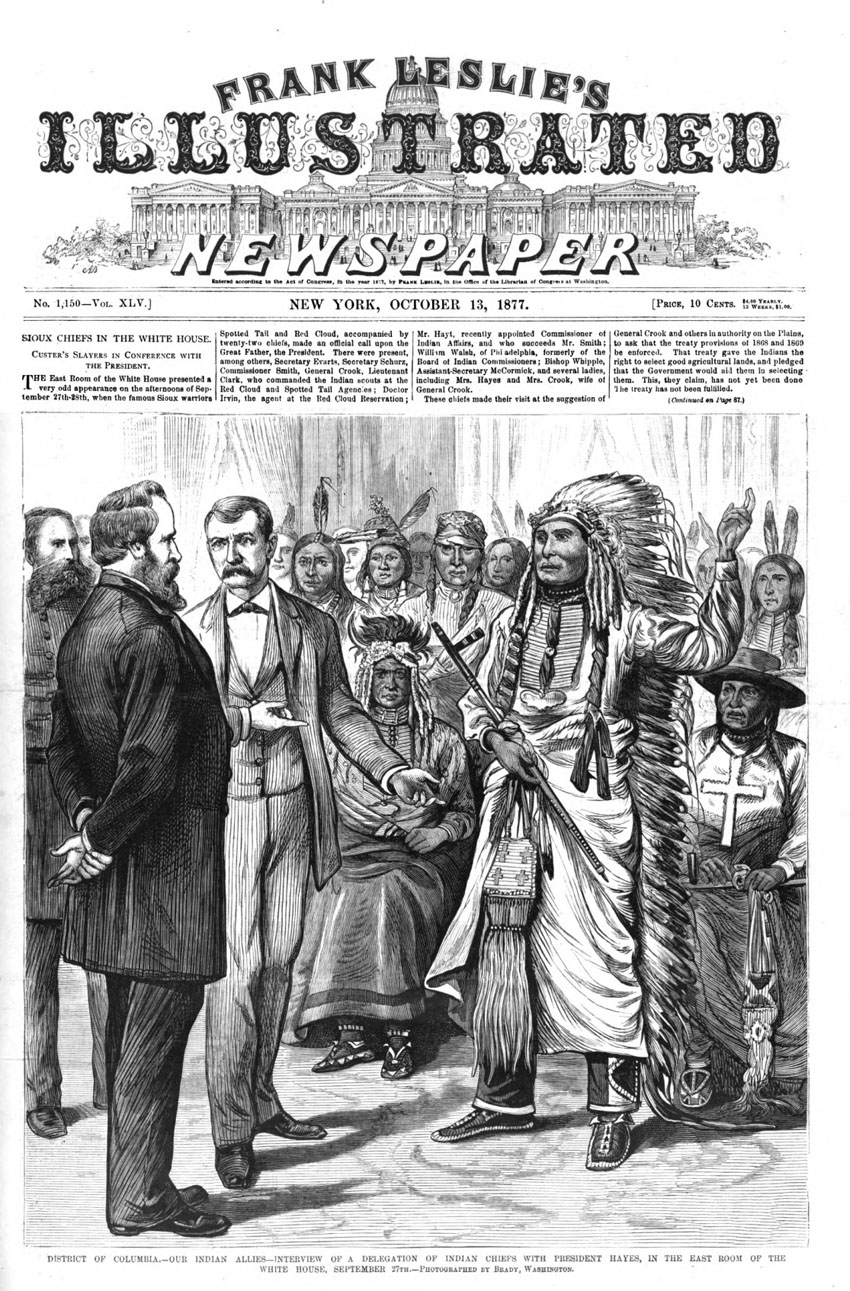
"Our Indian Allies" with
President Hayes, Frank Leslie's Illustrated Newspaper,
October 13, 1877.
 a
The White House, Washington
D.C., Currier & Ives, 1877 (Courtesy Library of Congress).
The fund-raising for
a pedestal and installation of the Statue of Liberty in the New
York Harbor would take six years after its arm was first displayed
at the close of the 1876 Centennial Exposition in Philadelphia.
For the story on why it took so long see "The
Arm That Clutched the Torch: The Statue of Liberty’s Campaign
for a Pedestal" by Megan Margino, April 7, 2015 (New York Public
Library).

"Colossal hand and torch" at the Philadelphia
Centennial Exhibition, 1876. Image ID: G91F380_025F (Ibid. NYPL).
On December 6, 1877
Edison "completed" his Phonograph and made the decision
that his invention was ready to be heard by the public. (Note:
Friends of the Phonograph now call December
6 the "birthday of the Phonograph.")
On December 7, 1877
Edison left his home and laboratory in Menlo Park, New Jersey
and travelled by train to New York City and the offices of Scientific
American.
Scientific American
Office, No. 37 Park Row, Third Floor
Thomas Edison and his
associates Edward Hibberd Johnson and Charles Batchelor demonstrated
Edison's new tin-foil phonograph on December 7, 1877 to Alfred Beach
and the other editors of Scientific American.
The next edition of Scientific
American, published on December 22, 1877, included an article
titled "The Talking Phonograph" which started by describing
how Edison had come into their office, "placed a little machine
on our desk, turned a crank, and the machine inquired as to our
health, asked how we liked the phonograph, informed us that it
was very well, and bid us a cordial good night."
Edward Hibberd Johnson (Courtesy
LoC), Charles Batchelor and Thomas Edison
Scientific American,
December 22, 1877, pp. 384-5
“THE TALKING PHONOGRAPH”
- “astonishing’…”it is impossible to listen to the mechanical without
his experiencing the idea that his senses are deceiving him…even if
in its present imperfect form many words are not clearly distinguishable
, there can be no doubt but that the inflections are those of nothing
else than the human voice”. December 22, 1877, Scientific American.
“SPEECH BOTTLED UP” – this is an invention
“that promises to speak for itself; to give to our ears sound when
weeks, months or years may have elapsed since their utterance; that
may even restore to us the voice of the dead…” December 26, 1877,
New York Tribune.
President Hayes's First
Message - Its Impression on the Mind of Our Cartoonist," Frank
Leslie's Illustrated Newspaper, December 22, 1877.
Phonographia.com
|


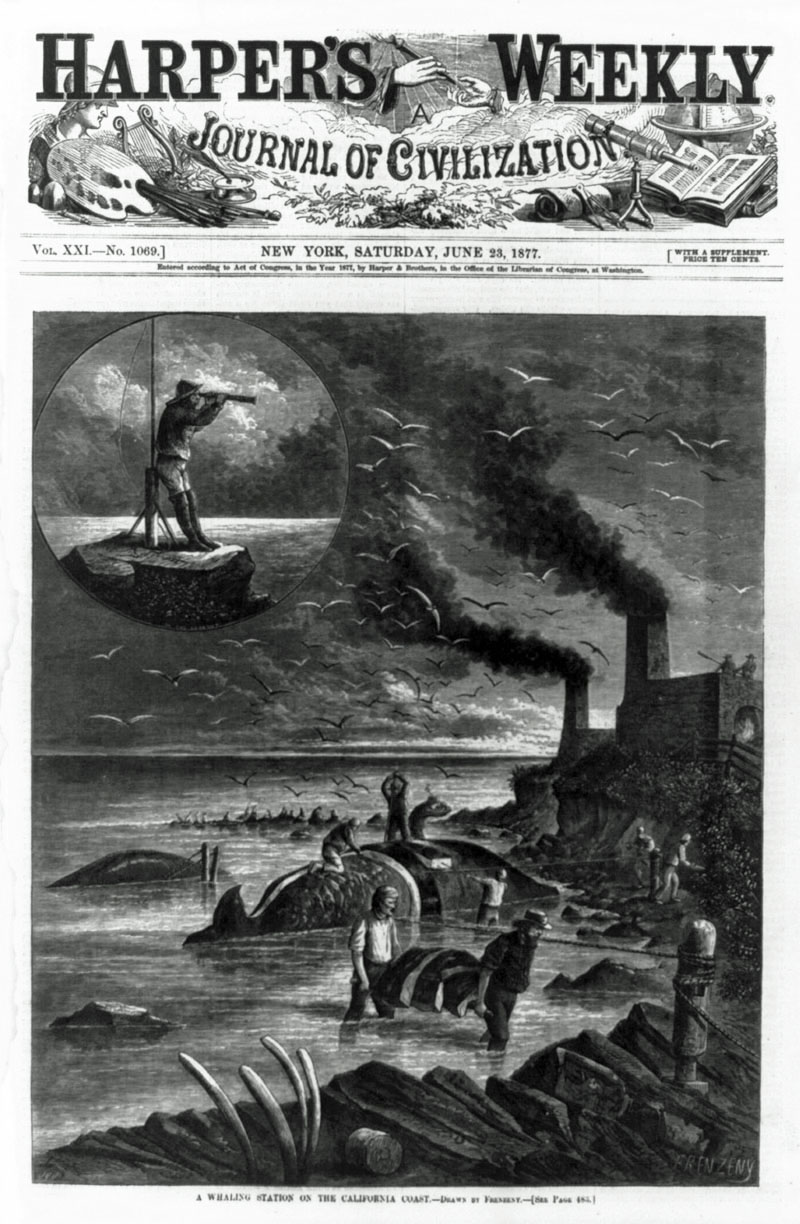



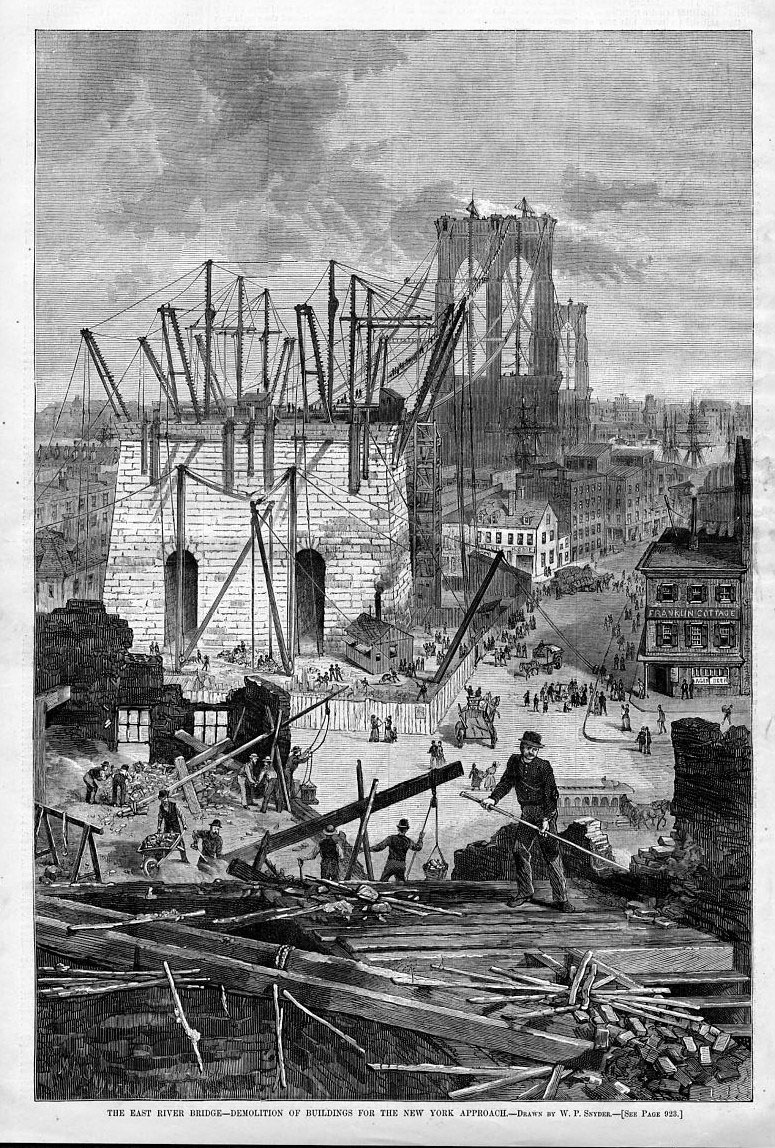
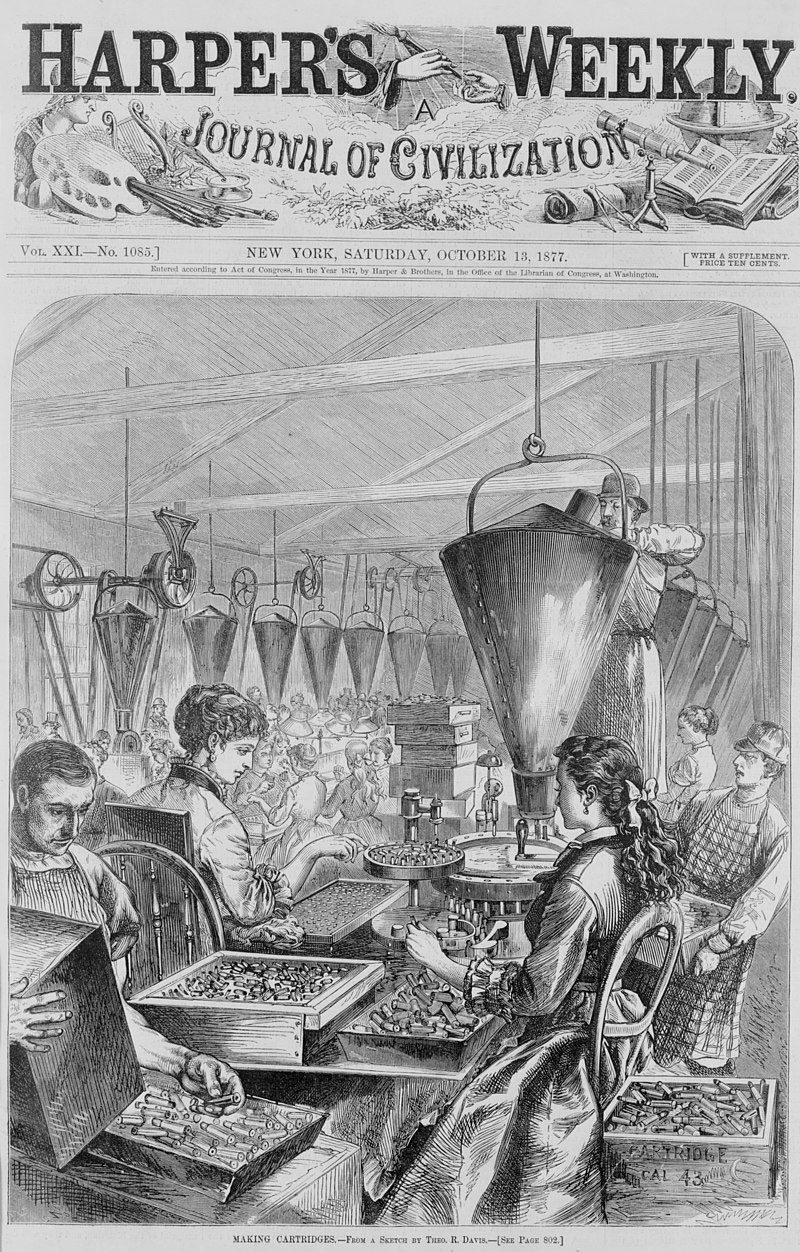
 a
a






























